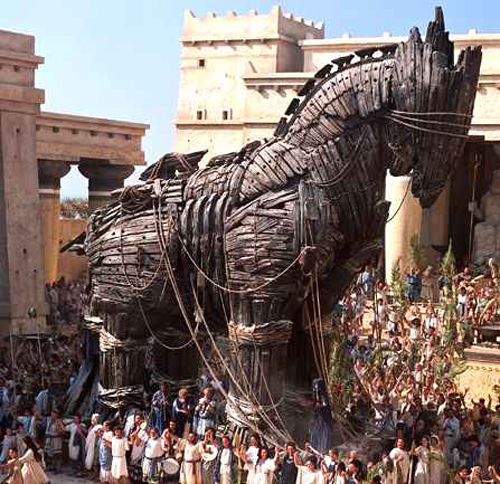Strange things are afoot at the Circle K.
According to Michaelangelo Rucci – I know – the AFL is set to purchase the licenses for the Adelaide Crows and Port Adelaide Power from the SANFL.
While a formal announcement has yet to be made, I think this will indeed come to pass. As regards what it all means, much like the French Revolution, well, it is far too early to tell.
What we do know for sure is that the simple fact that the Port license is coming for free due to the debts carried by the 2nd South Australian team shows us just how far behind the 8 ball that club is.
Again, that’s hardly news, but the implications are potentially huge. There’s a strong school of thought among Port fans that breaking free of the SANFL can only be a good thing.
There’s no denying that Port have been hamstrung, and given a regular kick in the jatz crackers for good measure, by their current (for now) license arrangement with the SANFL.
And given the horror show they’ve had to endure on and off field for the last few years, it is understandable that any change in their circumstances would be seen as an improvement on yet more of the same.
But the Port types should be very careful what they wish for. The deal, as reported by Rucci, effectively sees Port swap de facto SANFL control for AFL control. And just as the SANFL ran the club in its own best interests rather than Port’s, so the AFL will do what is best for it, not necessarily Port or its members.
There’s a few interesting things to remember here. The AFL is currently in a munificent phase. It is rolling in dollars and spending them freely. But the money that is being given to clubs, and there is plenty, comes with very tight strings.
Despite the received wisdom of many footy fans, the multi-million dollar disequal money given to Melbourne clubs is not simply dumped into bank accounts to be spent as the clubs desire. It is – quite rightly – very clearly tied to specific purposes which the AFL oversees. Another corollary is that the AFL take a far greater role in the day to day running of clubs.
This is not to say they make financial decisions, but they do demand to be kept informed of the clubs financial plans and have made explicit that the disequal funding, to be reviewed after three years, is reliant on clubs meeting targets and requirements set by the AFL.
Port are already big recipients of AFL cash and are about to find themselves even further under the gimlet eye of The Organisation. This restricts Port’s ability to act independently at a number of levels: AFL directors will push a certain line and the dependency on ongoing AFL support means that Port will have to swallow some stuff the AFL wants that the “native” Port types might not.
It is also worth remembering that the good times are not guaranteed to last. The AFL is embarking on a generational change in its revenue raising. It has made clear that it sees the future of media rights not in big set piece deals with broadcast networks, but in a new paradigm, one centered around selling direct to consumers.
The AFL is not a stupid organisation and all the current trends indicate it is right to pursue this path. But it is still a risk and even if the AFL gets all its end of things right, economic circumstances may change and political circumstances may change.
Most importantly, the AFL’s own circumstances may change. Demetriou will not be there forever. The AFL may find that take up of its new revenue raising model is stronger in some parts of the country than others. The South Australian economy, already weak, may falter further. The Olympic Dam decision, while hardly the catastrophe painted by certain politicians, is not what the state wanted or needed either.
It’s worth recalling the AFL is only committed to having two South Australian teams for the life of the current broadcast arrangement. After that, if it controls the licenses, all bets are off.
It is unlikely, but not impossible, that circumstances may change to the point where the AFL decides it can get better value by having an 18th team in another location. Or by drastically changing the make up of the second team in South Australia to the point where Port fans to not recognise it. If the AFL had directors on the North board in 2007, we’d be the Gold Coast Kangaroos now.
And finally, Port should remember the grim economic reality that underpins the lack of a Tasmanian team. Tasmania is a small low growth economy that is already a rusted on footy state. The AFL knows that people there will watch footy anyway. It is not beyond the realms of possibility that the league might calculate that long term, there’d be very little, if any, net loss, in removing Port in favour of say, a third WA team. Yes, some of the current generation would abandon AFL footy, but their kids, knowing nothing else and soaked in footy culture, would come back to the fold.
This is by no means a prediction. It is just a series of possibilities. But things are changing drastically for Port, one of the oldest and proudest clubs in the history of our game and change is not always for the better.
Port should not forget the old adage: beware of Greek Cypriots bearing gifts.






